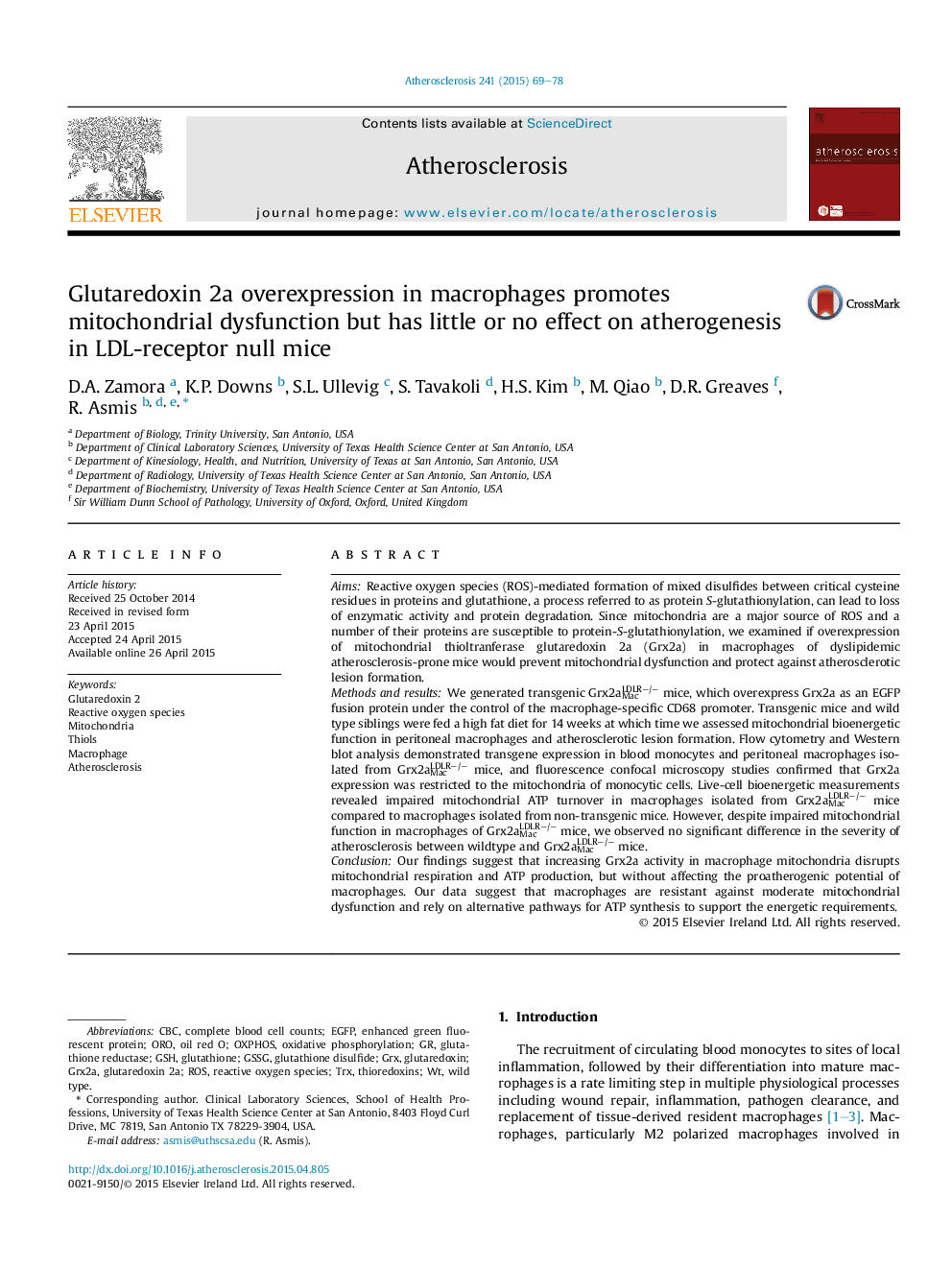| کد مقاله | کد نشریه | سال انتشار | مقاله انگلیسی | نسخه تمام متن |
|---|---|---|---|---|
| 5944459 | 1172344 | 2015 | 10 صفحه PDF | دانلود رایگان |

- Mice carrying a CD68 promoter-driven Grx2a-EGFP transgene show Grx2a expression that is restricted to mitochondria of macrophages.
- Overexpression of mitochondrial Grx2a disrupts mitochondrial bioenergetics in macrophages.
- Overexpression of mitochondrial Grx2a impairs mitochondrial ATP turnover in macrophages and sensitizes macrophages to oxysterol-induced apoptosis.
- Overexpression of mitochondrial Grx2a in macrophages had little or no effect on atherogenesis in high-fat diet fed LDLR-null mice.
AimsReactive oxygen species (ROS)-mediated formation of mixed disulfides between critical cysteine residues in proteins and glutathione, a process referred to as protein S-glutathionylation, can lead to loss of enzymatic activity and protein degradation. Since mitochondria are a major source of ROS and a number of their proteins are susceptible to protein-S-glutathionylation, we examined if overexpression of mitochondrial thioltranferase glutaredoxin 2a (Grx2a) in macrophages of dyslipidemic atherosclerosis-prone mice would prevent mitochondrial dysfunction and protect against atherosclerotic lesion formation.Methods and resultsWe generated transgenic Grx2aMacLDLRâ/â mice, which overexpress Grx2a as an EGFP fusion protein under the control of the macrophage-specific CD68 promoter. Transgenic mice and wild type siblings were fed a high fat diet for 14Â weeks at which time we assessed mitochondrial bioenergetic function in peritoneal macrophages and atherosclerotic lesion formation. Flow cytometry and Western blot analysis demonstrated transgene expression in blood monocytes and peritoneal macrophages isolated from Grx2aMacLDLRâ/â mice, and fluorescence confocal microscopy studies confirmed that Grx2a expression was restricted to the mitochondria of monocytic cells. Live-cell bioenergetic measurements revealed impaired mitochondrial ATP turnover in macrophages isolated from Grx2aMacLDLRâ/â mice compared to macrophages isolated from non-transgenic mice. However, despite impaired mitochondrial function in macrophages of Grx2aMacLDLRâ/â mice, we observed no significant difference in the severity of atherosclerosis between wildtype and Grx2aMacLDLRâ/â mice.ConclusionOur findings suggest that increasing Grx2a activity in macrophage mitochondria disrupts mitochondrial respiration and ATP production, but without affecting the proatherogenic potential of macrophages. Our data suggest that macrophages are resistant against moderate mitochondrial dysfunction and rely on alternative pathways for ATP synthesis to support the energetic requirements.
Journal: Atherosclerosis - Volume 241, Issue 1, July 2015, Pages 69-78